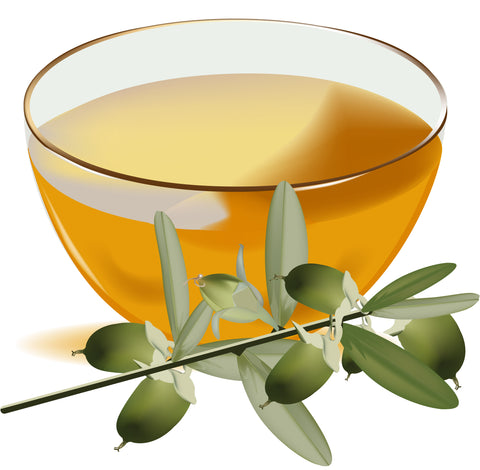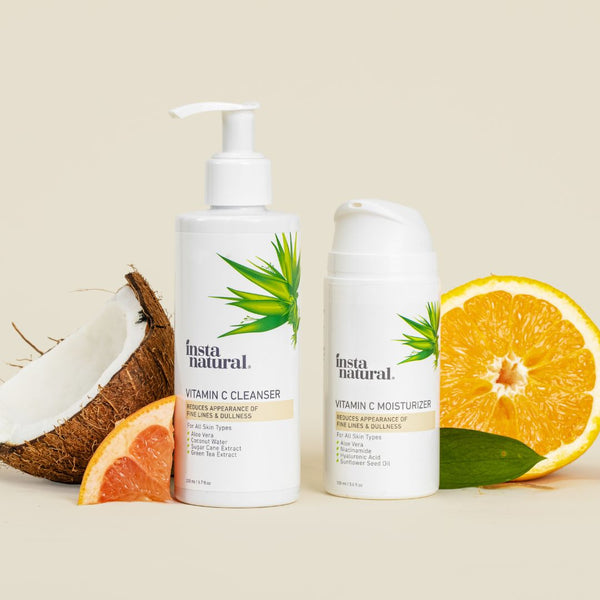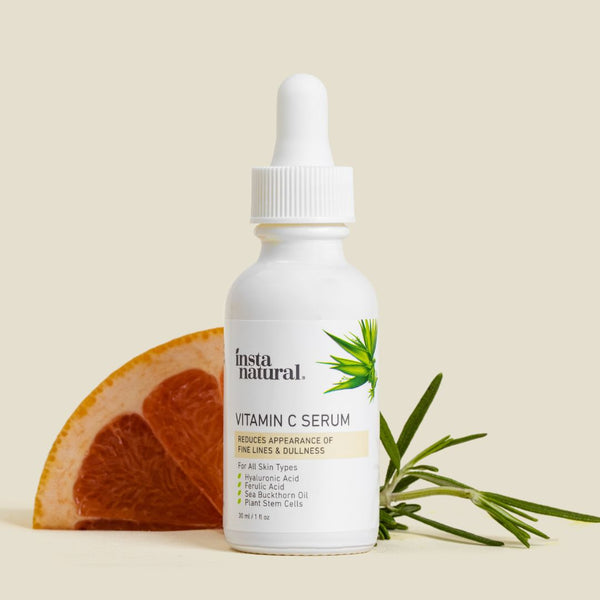
Walk down the cosmetics aisle at your local supermarket, and you’ll find yourself confronted by endless skin care options, all of which claim to have outstanding benefits for your skin. How can you analyze the products to make sure you are choosing the ones that will really give you smoother, clearer, more beautiful skin? Take a look at their labels. If a product contains one or more of the following ingredients, chances are it won’t disappoint you.
Retinol
Retinol is a form of vitamin A, and it can do wonders for your skin. It encourages your skin to renew itself by speeding up cell turnover and encouraging collagen production. The result is more radiant skin that has fewer fine lines, wrinkles, and sun spots. Retinol’s power to increase cell turnover can also help battle acne. Dead skin cells can clog pores, leading to blemishes, but retinol — along with regular exfoliation — can put an end to this problem.
Pay attention to the amount of retinol in skin care products. Sometimes retinol is the key active ingredient, but other times it takes a back seat to other beneficial ingredients. Also look for opaque packaging that doesn’t have a wide mouth; air and light exposure can hinder retinol’s efficacy.
When you’re scanning product labels, keep an eye out for beta carotene as well. The body converts beta carotene into retinol, so it offers many of the same benefits.
Green Tea Extract
Green tea is great for you if you drink it, but it can also benefit you when applied topically. The polyphenols in green tea are powerful antioxidants that can slow down signs of aging, such as wrinkles and sagging skin.
Products with green tea extract are also great for when you’ve spent a little too much time in the sun. The green tea can reduce inflammation and battle free radicals, speeding up the healing process.
In addition to looking for products that contain green tea extract, you can make your own at-home green tea skin treatment. Brew some green tea, freeze it into cubes, and use the cubes as a toner.
Sunscreen
“Sunscreen” is not a singular ingredient to look for in your skin care products; there is a range of ingredients that can block harmful ultraviolet rays. However, keep in mind that not all sun-blocking ingredients are beneficial for your skin.
Zinc oxide and titanium dioxide are both safe and provide robust sun protection.
Alpha Lipoic Acid (ALA)
The word “acid” might frighten you a bit, but don’t worry. Alpha lipoic acid is actually one of the most beneficial ingredients for your skin. According to one dermatologist, “Alpha lipoic acid (ALA) is called 'the universal antioxidant' because it is both fat- and water-soluble. This means that ALA is easily absorbed through the lipid layers of the skin and works equally well as a free-radical fighter in the cell plasma membrane and in the watery interiors of the cell. Further, it is 400 times stronger than vitamins E and C combined (both of which are renowned for their antioxidant properties).”
ALA can fight the signs of aging, reduce inflammation, and shrink pores.
Vitamin C Ester

There are two different types of vitamin C; water-soluble and fat-soluble. The fat-soluble version, vitamin C ester, is better for your skin because of its heightened antioxidant performance. It can stimulate cell growth, fight the signs of aging, and encourage collagen and elastin production.
One of vitamin C ester’s biggest advantages over its water-soluble counterpart is that it is more stable, meaning it will retain greater efficacy in creams and other topical solutions.
A vitamin C serum that contains other healthful ingredients can really give your skin a healthy, youthful glow.
Polyenylphosphotidyl Choline (PPC)
Don’t try too hard to pronounce this one — just call it PPC. PPC is a component of some foods, including soy beans and eggs. It is an unsaturated phospholipid, which basically means it is a type of fat. PPC is excellent at relieving dry skin, and it can help with conditions such as eczema.
Even if your skin doesn’t feel dry, you might give PPC a try, because it can give your skin a little extra glow.
Licorice
Licorice may make you think of one of your favorite movie night snacks, but this plant does more than just provide a yummy flavor. Licorice extract, otherwise known as anise, contain plant sterols. These sterols can help combat common skin problems, such as inflammation and wrinkles. It may also help with rosacea, eczema, and psoriasis. Don't worry if it isn't one of the first ingredients on the label. You can reap the benefits of licorice even if it is only one to two percent of a product. If you use it consistently over time, it may help reduce the appearance of dark spots and prevent blemishes.
Soy
The soy plant contains high-quality protein, fiber, and isoflavones, which come together to give soy a positive effect on the skin.
One of the unique things about soy is that it can help moisturize dry areas while reducing oil production in others; it is a so-called “smart moisturizer,” making it an excellent choice for people with combination skin.
Furthermore, soy may help fight those pesky wrinkles thanks to one of its isoflavones. However, keep in mind that science has yet to prove soy’s anti-aging properties.
Soy may even help firm your skin and reverse damage from the sun by supporting collagen and elastin production.
DMAE
DMAE has been called “a facelift in a jar.” Indeed, it can help battle sagging skin — one of the primary signs of aging. It may do so by stabilizing skin membranes. DMAE also boosts the production of a neurotransmitter called acetylcholine.
DMAE products tend to be on the more expensive side, and the ingredient won’t give you effects that compare to what a surgeon could do. However, it may be just the thing your skin care routine needs to help you look your best.
Oats

Even if you don’t like to consume oats, you can still reap some of the benefits they offer by integrating them into your skin care routine. In fact, some estimates say that people have been using oats for skin care for 4,000 years.
Oats can help fight acne. Simply boil some oats and use them as an exfoliator. You’ll vanquish dead skill cells, and the oats will remove excess oils while helping your skin find a good moisture balance. Oats’ anti-inflammatory properties can help relieve redness and itchiness.
Not only do oats make a great homemade facial, they can also benefit you when they come as an ingredient in your skin care products.
Tamanu Oil
Tamanu oil comes from the tamanu tree, which is native to the South Pacific. Although the oil has long been used for skin care and other purposes where the tree naturally grows, tamanu has only recently worked its way into mainstream markets in the United States and Europe.
Natural medicine expert Chris Kilham wrote, “Tamanu oil possesses a unique capacity to promote the formation of new tissue, thereby accelerating wound healing and the growth of healthy skin.”
Kilham cited the case of a woman at a St. Louis hospital who had a gangrenous ulcer. Doctors felt that amputation would be necessary, but regularly dressing the wound with tamanu oil saved her leg.
Tamanu’s anti-inflammatory properties can help with a range of skin conditions that are less severe than gangrene, such as acne, redness, and dryness. You may find the oil particularly useful for reducing the appearance of scars.
Jojoba Seed Oil

Jojoba seed oil resembles an oil that your skin naturally produces; it is an effective solution for chronically dry skin. You can also use it as a cleanser by dabbing some oil on your face and blotting away any leftover residue. It will get rid of lingering makeup and leave you feeling fresh.
You may also notice that the oil softens the appearance of wrinkles.
Don’t limit your use of jojoba seed oil to just your face and neck. You can use it as an all-over body moisturizer. To get rid of cracks and rough spots on your feet, slather on some jojoba oil and then put your socks on — you may be able to cancel your next pedicure!
Witch Hazel
This ingredient might sound like it's mystical in origin, but it's really just a flowering shrub with awesome benefits for your skin. Witch hazel is a natural astringent; it can help to fight acne by clearing out your pores and removing excess oil. Even though it is an astringent, witch hazel can prevent your skin from losing water, meaning that it is good to use if your skin has a moisture imbalance. Witch hazel can also tighten your skin, making it a good go-to ingredient for reducing the appearance of bags under the eyes.
You can use witch hazel on parts of your body other than your face. If you have varicose veins, put some witch hazel on a cloth and apply it to the veins. The witch hazel will battle inflammation and make the veins appear smaller. Because witch hazel can reduce swelling and encourage healing, it is also handy for speeding recovery from bruises and razor burn.
You can buy witch hazel as a standalone treatment, or you can look for it as an ingredient in other skin care products.
Neuropeptides
Your skin naturally contains peptides, which are amino acids that keep your skin smooth and healthy. However, aging can slow down peptide production. By topically applying neuropeptide skin care products, you give your skin a boost and help it battle wrinkles, sagging, and other unsightly problems.
Neuropeptide products tend to be on the expensive side, but their effectiveness often makes them worth the price.
It Pays To Do Your Research!
It is impossible to delve into the details of every ingredient you might encounter in skin care products, and even if an ingredient is generally safe and good for your skin, it is still possible that you’ll have an adverse reaction.
Avoid known toxic compounds, and research any ingredients that you have questions about. Even if the FDA has not banned a certain substance, that does not mean it is safe.
If you’re shopping in a store, bring your smartphone with you so you can do a quick online search for ingredients you’ve never heard of. If you’re shopping online, carefully read product descriptions and keep an extra tab open on your browser so you can look up product reviews and research specific ingredients.
There is no shortage of great skin care products out there, as long as you tread carefully.



